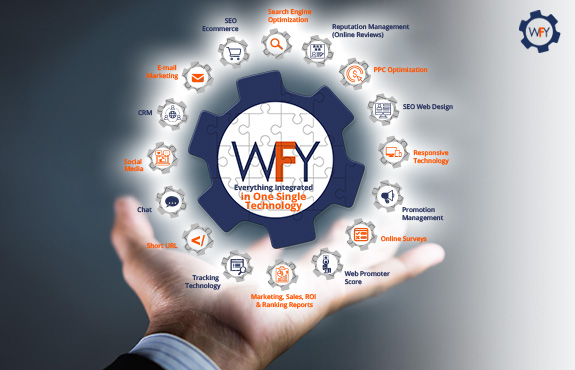What Are the Advantages of Chatbots?
12 min read
July 07, 2021
It's 2 AM, and you're shopping online for the perfect gift for your friend's birthday. Somehow, your search ended on a store that sells odd knickknacks and hilarious dank memes printed on anything you can think of.But you have so many questions and need assistance, so now what?
Suddenly, you see an icon of a person's face flashing on your phone, giving you the impression that someone's awake to help someone like you.
Chances are, that's not an eager human customer service representative. Most likely, that's a bot sophisticated enough to convince you to buy a "Dogecoin" t-shirt, and your friend's going to love it.
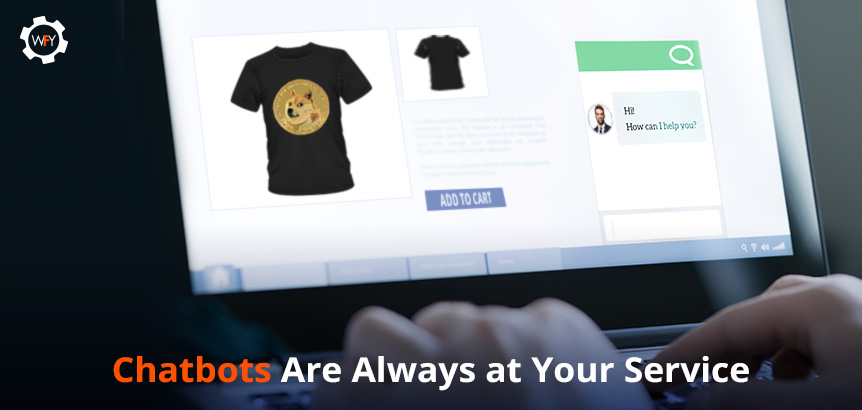
But how did we get here with chatbot technology, and why do the interactions seem so real? Can they ever replace human interactions?
The answer is no, but chatbots can streamline tasks, processes and even carry out jobs as if they were one of us.
They can serve as customer service reps and technical support, provide analytics, help you book flights, pose as psychologists (not kidding) and the list of chatbots goes on.
Type into Google a noun, verb, or an industry, and then write "chatbot" right after and you will find a bot for those keywords, and if you don't, then invent it and become successful!
Chatbots are becoming increasingly popular, and they have their advantages, but like all things great, they have some downsides.
So let's find out why these chatbots are growing in popularity for many businesses and organizations. We'll even explore a few ways companies use chatbots, but first, let's start with what they are and how they work by sprinkling in a bit of history.
What is a Chatbot?
To keep it simple, a chatbot is a computer program that simulates human conversation when the user sends text messages, or these days, sends voice commands, and the bot responds conversationally or sometimes gives a canned (predetermined) response.This is how we think of chatbots today. Still, in 1966, the concept of the modern chatbot was born with a computer program called ELIZA written by Joseph Weizenbaum, a German-American computer scientist and professor at MIT.
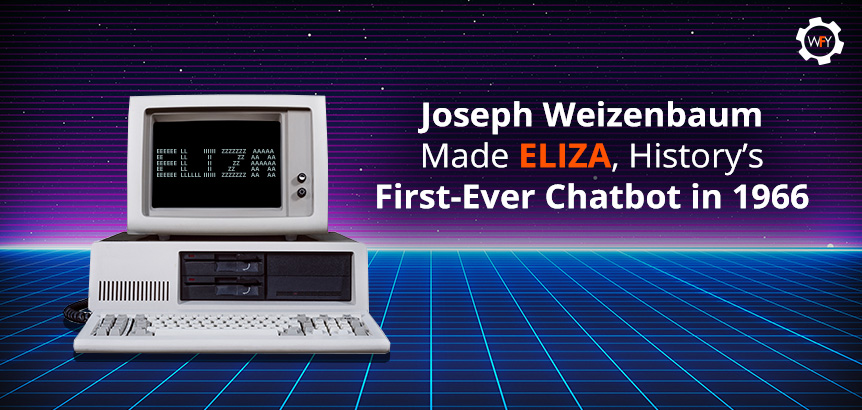
Weizenbaum wrote ELIZA's computer code to be conversational using open-ended questions modeled after Carl Rogers, a psychologist who enabled his patients to open up and express themselves freely.
The script that Weizenbaum wrote applied pattern matching techniques (a set of rules) to keywords within a given statement.
Once the user sent a message, ELIZA would analyze it, rank the main keywords, disassemble and reassemble specific phrases to figure out what follow-up question to reply with.
The years 1956 through 1974 sparked a golden era in the research and findings in these computer science fields: artificial intelligence (AI), natural language processing (NLP), and machine learning (ML). And this is similar to how we develop and recognize the chatbots we see today.
Technology has rapidly advanced in these three fields to create many types of sophisticated business solutions to streamline how we communicate via chatbot technology.
Crash Course on the Types of Chatbots
As we said earlier, there are a ton of different chatbots that range in sophistication.You've got basic bots that can be built around a linguistic (keyword-based) and/or rule-based (decision tree) model that can recognize languages, synonyms, word order, list choices for users to select from, and more.
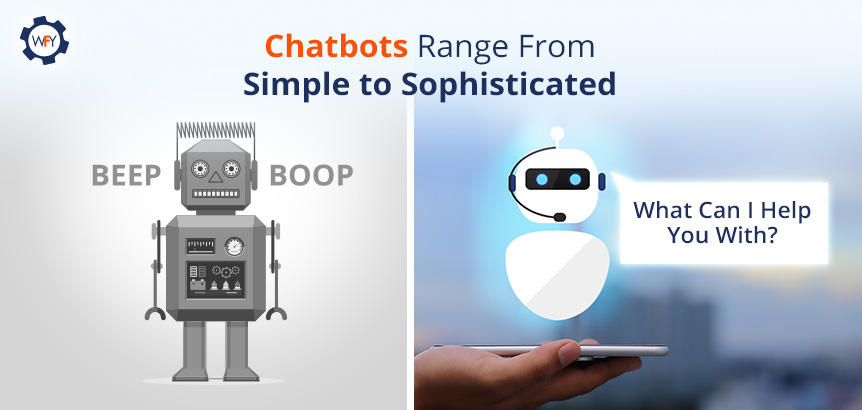
Then there are highly complex bots that learn about your business over time through AI, NLP, and ML technologies. Lastly, you have virtual assistants.
They have everything an AI chatbot has, but they use natural language understanding (NLU) and artificial emotional intelligence technology.
We're talking about Amazon's Alexa, Apple's Siri, Google's Assistant, and Microsoft's Cortana to give you real-world examples.
Virtual assistants can recognize context and can interact with you naturally. They use predictive intelligence to personalize your user experience as they gather data about you.
Lastly, you have hybrid chatbots that use a combination of both AI and rule-based linguistic models.
Every business has a different set of needs, and not every company needs an Alexa type of bot. We'll start with the most common type of chatbot and move on to AI chatbots while listing the advantages and disadvantages of each.
Basic Chatbot Solutions
Businesses and organizations have been using basic chatbots for a while to reach their goals of meeting consumers' expectations. In fact, here are some quick stats to show you how basic chatbots have helped them increase conversions, return on investment (ROI) and return on ad spend (ROAS).- In a survey consisting of 255 Chief Technology Officers, 57% of them agreed that chatbots delivered a large ROI with very minimal effort required (source: Chatbots Are Here to Stay by Accenture Research).
- Chatbots increased sales by an average of 65%, and 26% of those sales had started and ended with a chatbot interaction (source: Where Chatbots Are Headed in 2021 by Intercom).
- Running Facebook ads using messenger chatbots has shown to get 4 to 50 times better ROAS for mobile ads compared to desktop ads, resulting in more website traffic and brand awareness (source: Chatbots in Your Facebook Marketing Strategy by INC.).
- A global study surveyed roughly 600 executives, and 80% of them saw improvements in customer satisfaction, service delivery, and call center performance (source: Humans + Bots: Tension and Opportunity by MIT Technology Review Insights).
Examples of simpler chatbots are those that either uses a basic button selection or menu-based functionality. It's very common to see this type of chatbot online these days.
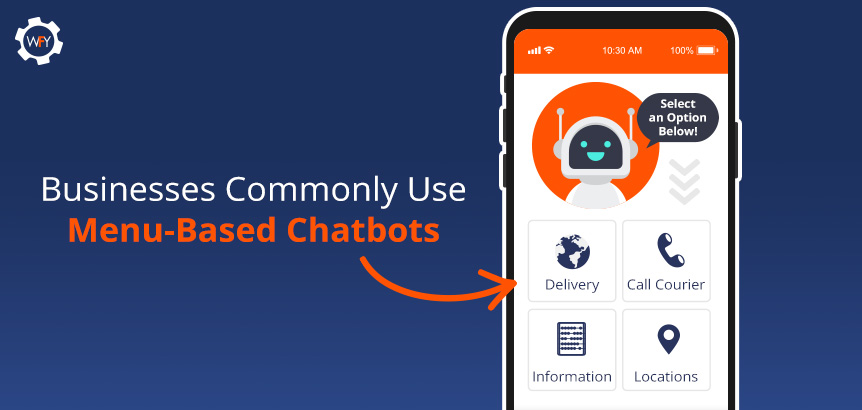
They're built around a framework that uses a hierarchical structure or a tree of choices. This enables users to narrow down their issues and resolve them or get information.
Basic chatbots use a "is it this or that?" set of rules. What users will see are predetermined questions and answers for them to select or respond to.
It's very similar to the automated customer service you'd experience over the phone. You'll hear a list of options for you to select or say aloud, but you usually end up screaming, "SPEAK TO A REPRESENTATIVE!"
All jokes aside, they do have their pros and can come in handy during multiple customer service touchpoints.
The Pros About Chatbots
Simple chatbots are great for answering technical support and FAQs, which is a huge pro. They can guide and take users around a website, and you could even purchase products or request services like ordering tacos for delivery — another great quality about them.Chatbots can be set up to answer a variety of queries and can trigger tasks like sending emails, scheduling meetings, and anything you can program using "if-this-then-that" logic.
They are cheaper and faster to add to your site than an app and give your visitors a straightforward experience. This streamlined experience makes customers happy, which boosts conversions and the perception of your brand.
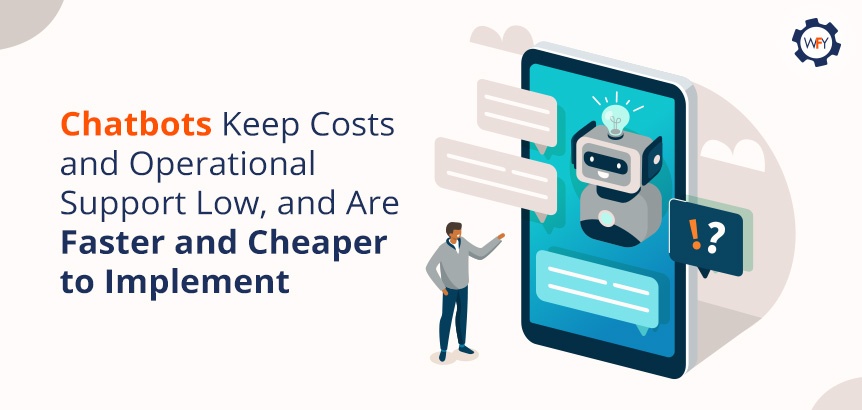
Based on the recent Chatbot Trends and Stats with Insider Reports article, they reportedly keep labor costs low and have been shown to cut down operational costs by 30%. Why?
Chatbots love working for free! Especially for 24 hours a day, and they even hate holidays too.
With that said, chatbots are great for first-level technical or customer support questions that are easy to answer. They're filters for your customer service departments and helpful to the technical support teams handling complex matters.
But they do slack in some areas.
Areas Chatbots Are Slacking In
Some chatbots may help convert leads into sales and provide support, but with their restrictive model of using a decision tree or conditional rules, they can fall short.Here are some of their disadvantages.
Basic chatbots can't handle too many variables that arise in complicated situations, issues, or questions — limiting their capabilities.
Simple chatbots always stick to the script, so they can't interact with you conversationally. Sometimes the bot doesn't understand what you're trying to say in the chat, and it gets worse if there are misspellings, typos, or language barriers (e.g., broken English).
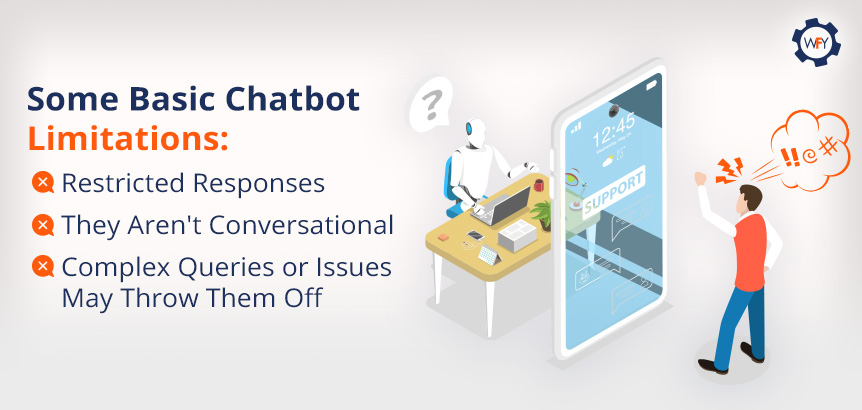
Since they can't improvise by thinking outside the box as humans would by asking qualifying questions, not everyone will get the answer they're looking for.
Like, imagine if you needed help with something that wasn't shown on their list of options or the response given didn't answer your question?
You'd most likely bounce from that site and look for help elsewhere after writing a nasty Yelp review. This leaves room for a drop in conversions, inadvertently affecting leads and sales and more poor user experiences as chatbots may lead conversations in an endless loop.
Sometimes people just want to talk to a real human at the end of the day.
This is why many businesses prefer using a hybrid approach. Users can start the conversation off with a chatbot and then transition it over to live chat options if that human touch is needed.
Chatbots can't replace humans, but AI chatbots are coming close to it in a way, so let's chat about it.
Man Versus Machine Learning Technologies
The classic debate between: "Man Versus Machines." If we're debating who'd win, an AI bot versus a human, based on the movie "The Terminator," then you already know the fictitious answer to that.But in the real world today, AI chatbots are becoming increasingly popular, common, and slightly more feasible to implement for your business, brand, etc.
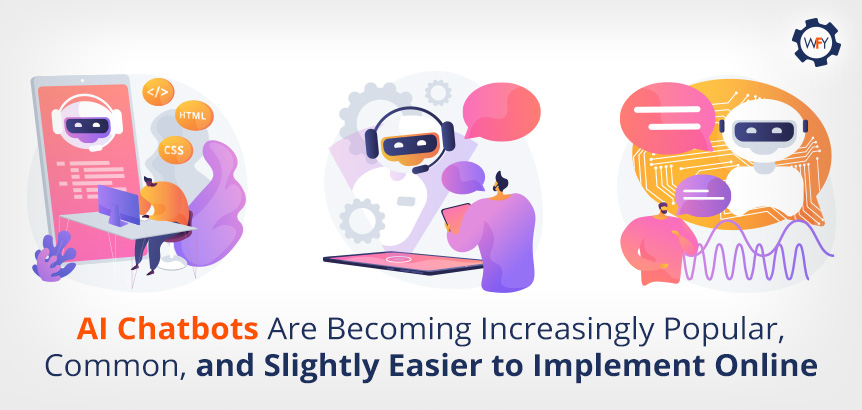
They may not replace humans as depicted in our apocalyptic movie reference, but they're advancing in a way to work with us as if we're coworkers — minus happy hour afterward.
Let's throw in some quick stats about the future of these human-like bots that are chatting via text, SMS messaging, and respond to, "Hey Alexa, what's up!"
- Globally, the conversational AI market size will grow up to $13.9 "B" as in billion-dollar industry by 2025 with a compound annual growth rate (CAGR) of 21.9% (source: Chatbot Market Global Forecast by Markets and Markets).
- By 2022, operational cost savings could collectively reach $8 billion dollars for businesses across a variety of verticals (source: Chatbot Cost Savings Report by Juniper Research).
- The AI chatbot market size is forecasted to grow up to $10.5 billion by 2026 with a CAGR of 23.5% (source: Conversational AI Market Global Forecast by Markets and Markets).
- AI chatbots are projected to save 5 billion hours of time for businesses and consumers by 2023 (source: Chatbot Annual Savings Report by Juniper Research).
There's seems to be a lot of promise in using AI chatbot technology. And these technologies are even going further with the next-gen version of the AI chatbot that is the virtual assistant.
There are key differences between virtual assistants and AI chatbots, so let's set the record straight.
As we said earlier, virtual assistants have everything an AI chatbot has, but they have NLU technology and artificial emotional intelligence.
That allows them to get on a human level to understand commands better, have a human-like conversation, and can pull info from search engines to answer queries. They exist on mobile, desktop, and interactive speaker devices, so these are your Alexas, Cortanas, Siris, etc.
Albeit similar, they're not completely the same as AI chatbots.
So let's break down the advantages and disadvantages of AI chatbots and save virtual assistants like the Alexas of the world for another post.
Advantages of AI Chatbots
The customer journey is all about immediacy and excellent experiences that revolve around self-service. It doesn't matter what industry, food delivery, tech support, retail customer service, whatever it is, customers have a "now or never" mentality.That's where AI chatbots can come to the rescue for operational support. The use of AI chatbots depends on the business's needs, and solutions can be tailored per industry, but here are the general advantages.
As explained earlier, they can understand context and respond conversationally. From simple queries to complex ones, these advanced chatbots can have fluid and flexible conversations while learning from previous users who have interacted with them.
So over time, they're keeping track of common issues or queries, storing them into a database and can anticipate needs, ask follow-up questions and get down to the point of the conversation.
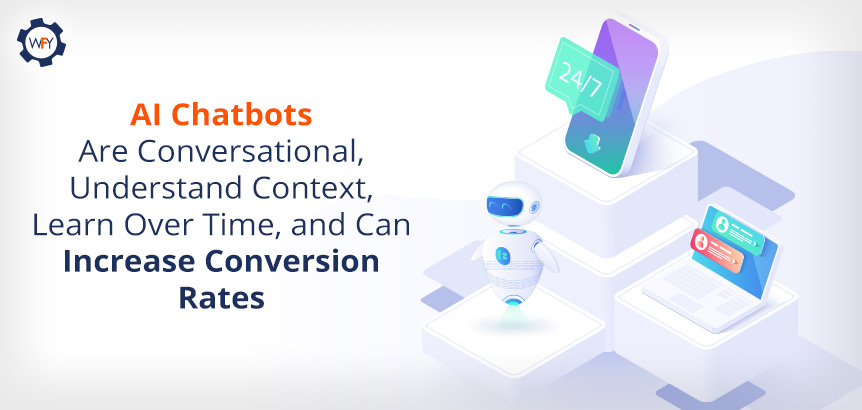
Another advantage of AI chatbots is that they can see through misspellings, understand the relationship of similar words, and can spot relevant keywords in a user's question to understand and respond appropriately.
They're also prone to making fewer errors as they keep learning over time. And like that, you're making a positive impression on the end-user and increasing customer engagement.
AI chatbots can offer suggestions for products and/or services. This circles back to the previously mentioned idea that they collect data about customers, gather opinions through surveys, and study purchase behaviors.
Obviously, they love working 24/7, just like their simple chatbot counterparts. They can handle repetitive tasks a lot faster than humans.
They're great for accomplishing manual tasks such as ordering inventory, and they're essentially used in any area or process that a company can save on human resources.
But with all the good that's been said, what areas are they lacking in or have room to improve in?
What Are the Main Disadvantages of AI Chatbots?
Most of the advantages of AI chatbots listed previously sound great on paper and are achievable. However, the volume and quality of training data required are the largest barriers to applying machine learning techniques in AI chatbots.Programming AI chatbots are, in a way, similar to setting up linguistic rule-based chatbots. You need real people to supervise and program them, and it's a mistaken belief that they program themselves.
Just like textual data analysis, people have to inspect, collect, filter data (cleanse), and select every necessary piece of data for the bot's functions.
So how humans understand language, syntax, context, synonyms, semantics, and all things grammar, etc., needs to be taught to an AI chatbot during setup.
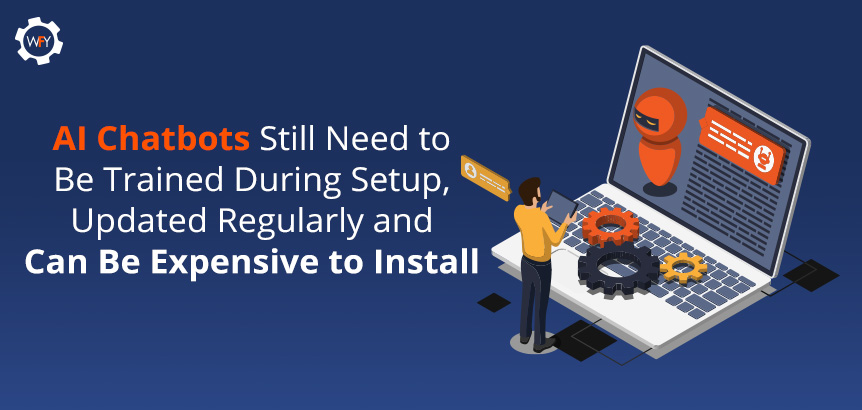
This opens up room for errors and basic assistance since they can't handle very complex questions or hold a conversation with a human until trained. Poor conversation skills equal a lack of decision-making skills as well, so keep that in mind.
And the cost of implementing AI chatbots isn't cheap either. It again really boils down to training and programming them. These 24/7 workers have to be constantly updated if any changes occur in the business or newer and complex questions have been raised by customers. So add that to the bill.
And just like how robots are depicted in the movies, a poorly trained AI chatbot can't understand emotion either. They can't tell if a customer is sad, angry, happy, or whatever mood they're in. In fact, they might even make things worse and repeat the same answer if a customer tries to rephrase their query.
In the end, things are looking good for conversational AI chatbots as technology progresses. Hopefully, the technology that's involved in virtual assistants becomes more feasible and affordable for enterprises of all sizes.
The Future of Chat
From simple, complex, to borderline human, this is the current state of chatbot technology. Online customers are more demanding, as we've learned. Even the millennial who wrote this dislikes waiting for an answer from tech support.Our world is growing more virtual, which is why chatbots aren't going anywhere. They're becoming very common for the online shopping experience, and they simplify processes and streamline tasks for enterprises of all sizes.
Now, at this time, they aren't replacing human interactions and conversations, although they try their best — they're getting close, though!
We've learned that chatbots save on operational costs by working 24/7 and provide interactive experiences, which drive customer engagement and conversions up. They can be utilized to perform many monotonous tasks to support and assist their human counterparts.
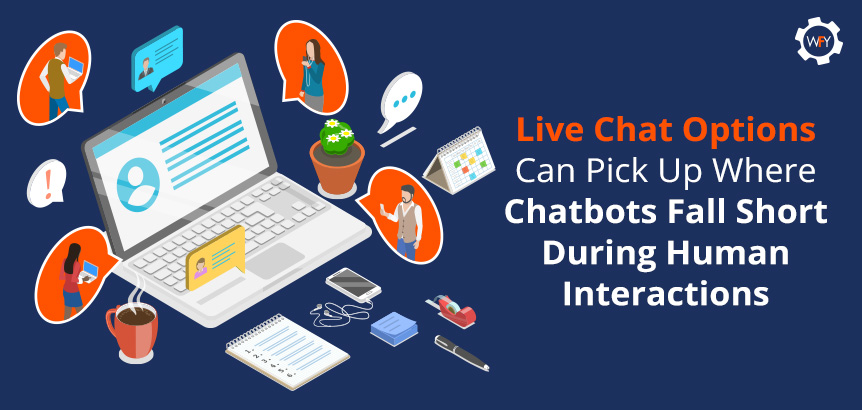
However, one thing to note is that there's a time and place for users to engage with chatbots. We touched upon it briefly, but like a great sports team where teamwork wins championships, you need to know when to get a human involved to win the hearts of consumers.
In fact, according to ICMI.com's article, The Stats Behind Chat, businesses with live chat options led to increased conversion rates of up to 40%. Who knows, it could even be more depending on your type of business.
Yes, chatbots have advantages, but their disadvantages show we're not quite there yet with the technology. That's why introducing real humans when the conversation isn't going well or when necessary can help mitigate issues.
For example, WebFindYou now provides a live chat component to its True and Unique All-in-One Digital Marketing Technology. We are currently integrating a chatbot feature that will allow businesses to provide the power of chat but within the recommended hybrid model specified above. A chatbot can begin the interaction with the customer, and a real human will be introduced at the right time. This way, companies can always ensure they are minimizing the required operational support while maximizing conversions via chatbots without sacrificing user experience and customer satisfaction. And the latter will help increase repeat customers and purchases and positive online reviews, which will help increase your local listing placement and SEO, which can provide even more leads and sales.
So you see, the key to maximizing your digital marketing efforts is to have all the pieces of the digital marketing puzzle tightly integrated together, each supporting the other, and this is what WebFindYou provides you.
Are you ready to discover the True Power of the Internet and maximize digital marketing revenues with WebFindYou? Simply follow these easy to follow steps to get started:
- Click here to purchase WebFindYou.
- You'll receive an email to access the WebFindYou platform for your website.
- Follow the very easy to follow videos to implement WebFindYou for your business.
For questions, please call us at 866-SEO-WEBS, fill out our contact form, subscribe to our newsletter or follow us on social media to stay informed of everything WebFindYou including webinars and live speaking events.
If you found this article helpful then let us know in the comments section below. Likewise, feel free to share it using the share options below. Want us to cover another topic of your interest pertaining to digital marketing? If so, then like us and follow us on social media, and post to any of our social media profiles the topic you'd like us to discuss: Facebook WebFindYou, Instagram @WebFindYou and Twitter @WebFindYou.
Want to read this in Spanish? Spanish Version >>



